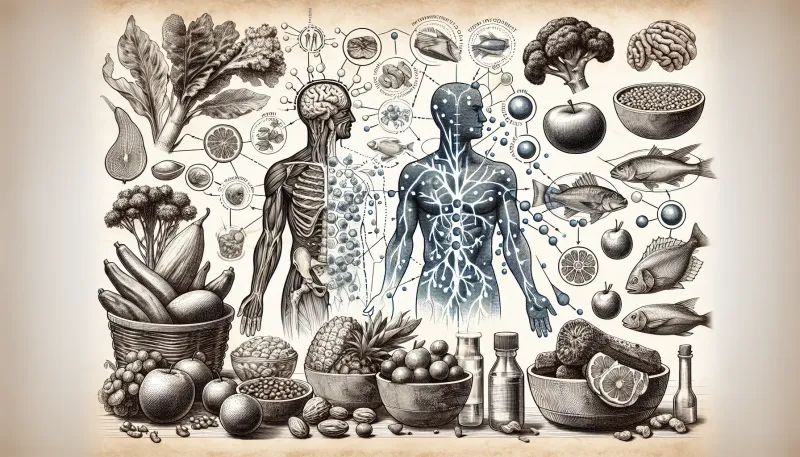How the Paleo Diet Can Help Reduce Inflammation: An In-Depth Guide

Discover how the Paleo diet can help reduce inflammation. This comprehensive guide explains the science behind the Paleo diet and its anti-inflammatory benefits.
Reducing inflammation is crucial for overall health, and many people are turning to the Paleo diet as a solution. In this guide, we'll explore how the Paleo diet can help reduce inflammation, backed by scientific research and practical advice.
Introduction to the Paleo Diet
The Paleo diet, also known as the Paleolithic diet, emphasizes eating foods thought to be available to humans during the Paleolithic era. This means focusing on whole foods such as vegetables, fruits, nuts, lean meats, and fish while avoiding processed foods, grains, and dairy.
Understanding Inflammation
Inflammation is a natural response by the body's immune system to injury or infection. However, chronic inflammation can contribute to various health conditions, including arthritis, heart disease, and diabetes. A key aspect of managing health is reducing chronic inflammation through diet and lifestyle changes.
Paleo Diet and Inflammation: The Connection
Research suggests that the Paleo diet's focus on anti-inflammatory foods can help reduce inflammation. Let's delve into the mechanisms at play:
Elimination of Processed Foods
Processed foods are often high in sugar, trans fats, and additives, which can promote inflammation. The Paleo diet encourages the consumption of natural, unprocessed foods, thereby reducing the intake of inflammatory substances.
Omega-3 and Omega-6 Balance
Modern diets typically have an imbalance of omega-3 and omega-6 fatty acids, which can lead to inflammation. The Paleo diet emphasizes omega-3-rich foods like fish, flaxseeds, and walnuts, helping to restore a healthy balance.
Higher Intake of Antioxidants
Fruits and vegetables, staples of the Paleo diet, are rich in antioxidants that fight oxidative stress and inflammation. Regular consumption of these foods can significantly lower inflammation levels.
Anti-Inflammatory Foods in the Paleo Diet
Here are some specific foods within the Paleo diet known for their anti-inflammatory properties:
Fruits and Vegetables
Leafy greens, berries, and cruciferous vegetables are rich in vitamins, minerals, and antioxidants that combat inflammation.
Healthy Fats
Foods like avocados, olive oil, and nuts provide healthy monounsaturated and polyunsaturated fats that prevent inflammation.
Lean Proteins
Sources such as grass-fed meats, free-range poultry, and wild-caught fish offer essential proteins with lower inflammatory risk compared to processed meats.
Scientific Evidence Supporting Paleo Diet and Inflammation
Numerous studies support the anti-inflammatory benefits of the Paleo diet:
Clinical Studies
Various clinical studies have shown that participants on a Paleo diet experienced reduced markers of inflammation compared to those on other diets. For instance, a study published in the Journal of Internal Medicine found that the Paleo diet significantly decreased CRP levels, a key marker of inflammation.
Comparison with Other Diets
Research comparing the Paleo diet to the Mediterranean and other dietary patterns indicates that the elimination of processed foods and refined sugars plays a critical role in its anti-inflammatory effects.
Practical Tips for Reducing Inflammation with the Paleo Diet
Incorporating the Paleo diet into your lifestyle can be straightforward with the following tips:
Plan Your Meals
Prepare weekly meal plans focusing on a variety of fruits, vegetables, lean proteins, and healthy fats to ensure a balanced diet rich in anti-inflammatory foods.
Stay Hydrated
Adequate hydration is crucial for maintaining bodily functions, including inflammation control. Aim to drink plenty of water throughout the day.
Avoid Common Triggers
Identify and eliminate foods that trigger inflammation for you personally, such as processed sugars, dairy, and gluten.
Potential Drawbacks and Considerations
While the Paleo diet offers many benefits, it's essential to be aware of potential drawbacks:
Nutrient Deficiency
Excluding entire food groups like grains and dairy can lead to deficiencies in certain nutrients like calcium and fiber. Consider supplements or alternative sources to maintain a balanced intake.
Initial Adjustment Period
Switching to a Paleo diet can be challenging initially, as it requires significant changes to traditional eating habits. Gradual implementation and planning can ease this transition.
Conclusion
The Paleo diet can be a powerful tool for reducing inflammation when followed correctly. By focusing on whole, unprocessed foods rich in anti-inflammatory properties, this dietary approach can help manage and prevent chronic inflammatory conditions. Always consult with healthcare professionals before making significant dietary changes to ensure it aligns with your personal health needs.



























